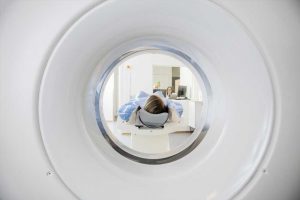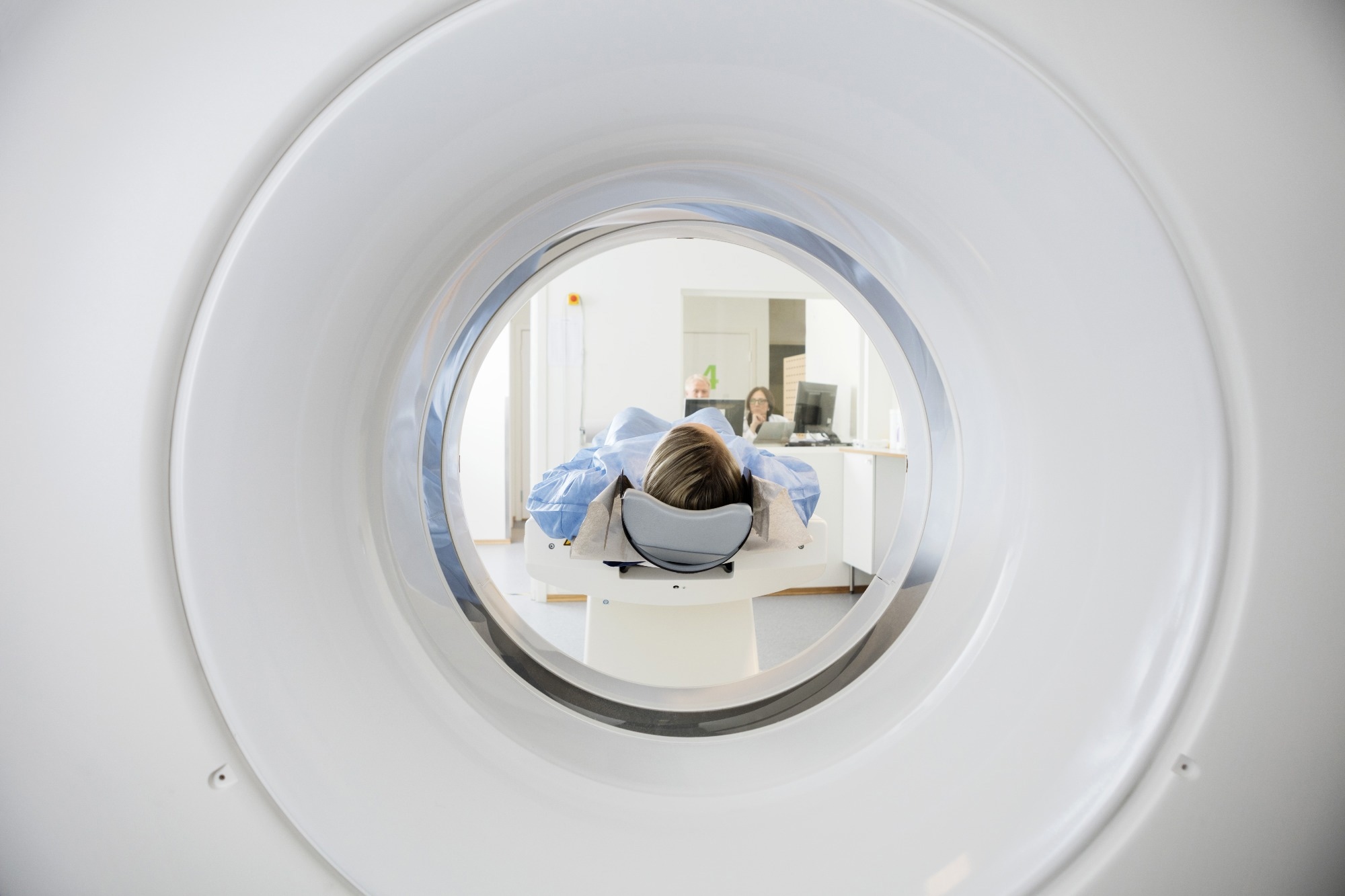Exploring the use of chest CT-based imaging biomarkers for early-stage COVID-19 screening

In a recent study published in Frontiers in Public Health, researchers demonstrated that vasculature-like signals (N) in chest computed tomography (CT) scans could serve as robust imaging biomarkers (IBs) of early-stage coronavirus disease 2019 (COVID-19) screening. They also validated these clinical-relevant IBs, thus, opening a new possibility to assist in screening COVID-19 patients. Most importantly, these IBs showed substantial potential to reduce the workload of clinicians and assist in distinguishing COVID-19 from other pulmonary diseases.

Background
There is a short supply of nucleic acid (NA) detection kits and specialized professionals in many countries, limiting the possibility of COVID-19 detection at an early stage via diagnostic testing. Relatively low viral load in the early stage of the disease also results in false negatives or limited sensitivity of reverse transcription-polymerase chain reaction (RT-PCR) tests. Then, a considerable proportion of patients do not even have typical clinical symptoms during the onset of the disease.
Pulmonary imaging, especially chest CT scanning, could play a unique role in early-stage COVID-19 diagnosis. It detects unifocal ground-glass opacities (GGOs) in the lungs of COVID-19 patients at an early stage of infection. As the disease progresses, GGOs infiltrate the whole lung and appear as lesions. Lung CT images could also help track lung changes in patients with COVID-19 who have negative NA tests.
However, what limits the use of most chest CT-based computational studies is the fact that there is a lack of typical characteristics in early-stage COVID-19 patients. Moreover, patients with community-acquired pneumonia (CAP) have misleading chest CT characteristics.
About the study
In the present study, researchers screened 419 patients from two hospitals in China, combining artificial intelligence (AI) and clinical findings on vascular changes in the lung regions with a system biology approach. All COVID-19 patients had confirmed diagnoses of mild to moderate illness between January 2020 and March 2020 based on the National Health Commission of the People's Republic of China criteria. The team recruited healthy patients and CAP patients randomly from the same two hospitals and used them as controls in training and validation cohorts independently. The control patients also had lung infections diagnosed via CT imaging a few months before the onset of the COVID-19 epidemic.
Further, the researchers used two different CT scanners, GE Optima 660 CT and uCT 530, with a tube voltage of 120 kilovoltage peak (kVp) and reconstruction thickness of 0.625 and 1.5 mm, respectively. They recognized vasculature-like signal(s) in the patients' pre-segmented lung regions in three dimensions (3D) using iterative tangential voting (ITV). They resampled each 3D chest CT image into isotropic image space, followed by ITV.
The team invited two radiologists with more than two months of intense and continuous diagnosis experience of COVID-19 in Wuhan, China, to independently and blindly assess the CT images in the validation cohort of the study. Finally, they used Mann-Whitney non-parametric test to determine the difference in vasculature-like signals and the abundance of individual IBs among different groups. Likewise, they used logistic regression to find an association between lung signatures and COVID-19.
Study findings
Of the 419 study participants, 116 patients from Hospital A and 303 patients from Hospital B served as the training set and a double-blind validation set, respectively. The median ages (in years) of participants in these two cohorts were 42 and 51. The percentage of females and males in training and validation cohorts was 45.7% vs. 54.3% and 53.1% vs. 46.9%. The number of COVID-19 patients, healthy participants, and CAP patients in the training cohort was 47, 20, and 49, respectively. Likewise, the validation cohort had 153, 60, and 90 COVID-19 patients, healthy participants, and CAP patients, respectively.
Compared with healthy and CAP patients, COVID-19 patients had significantly more vascular changes in the lung. Intriguingly, the average intensity of vasculature-like structures recognized and enhanced by ITV in the lung region in the training cohort revealed statistically significant differences (p < 0.05) between healthy, CAP, and COVID-19 patients.
Applying Stacked Predictive Sparse Decomposition (Stacked PSD) on the vasculature-like signal space from the training cohort uncovered eight COVID-19-relevant IBs. Each had a significantly different abundance between COVID-19 patients and others, as assessed by principal component analysis (PCA) and clustering. A random forest classification model for COVID-19 screening based on these IBs within the training cohort showed that each IB contributed differently during screening. IB-163 gave the best single biomarker performance [ared under the curve (AUC) = 0.893].
Even in the validation cohort, those eight pre-identified IBs clearly separated the COVID-19 patients from others. Encouragingly, the random forest model based on pre-obtained IBs predicted COVID-19 with excellent sensitivity (0.941) and accuracy (0.931), competing well with two COVID-19-experienced chest radiologists. Except for IB-88, all IBs provided perceptual and quantitative distinctions for two cases misdiagnosed by participating radiologists enabling accurate screening with over 96% confidence.
Conclusions
The double-blind validation across hospitals and CT scanners confirmed that the IBs identified in the study could work robustly and effectively in real-world clinical settings. They performed superior to COVID-19 experienced chest radiologists, especially for ambiguous cases, which is common during early-stage COVID-19 screening.
Many end-to-end AI models require large training cohorts and excessive computational resources. The study developed an unsupervised learning framework with a feed-forward IB extraction strategy that involved only element-wise non-linearity and matrix multiplication. Yet, it delivered superior, scalable, and stable screening performance using a small training cohort (n = 116).
To summarize, the authors developed a robust, accurate, and cost-effective COVID-19 screening method that provided clinical insights beyond existing clinical practice and the scope of many existing end-to-end AI systems. With improvisations, it could facilitate the prediction of COVID-19 patients' prognosis and clinical outcomes at an early stage.
- Liu, Xiao-Ping; Yang, Xu; Xiong, Miao; Mao, Xuanyu; Jin, Xiaoqing; Li, Zhiqiang; Zhou, Shuang; Chang, Hang. (2022). Development and validation of chest CT-based imaging biomarkers for early stage COVID-19 screening. Frontiers in Public Health. doi: https://doi.org/10.3389/fpubh.2022.1004117 https://www.ncbi.nlm.nih.gov/research/coronavirus/publication/36211676
Posted in: Medical Science News | Medical Research News | Disease/Infection News
Tags: Artificial Intelligence, Biomarker, Computed Tomography, Coronavirus, Coronavirus Disease COVID-19, covid-19, CT, CT Scanning, Diagnostic, Hospital, Imaging, Lungs, Nucleic Acid, Pneumonia, Polymerase, Polymerase Chain Reaction, Public Health, Tomography, Transcription, Vascular, Vasculature

Written by
Neha Mathur
Neha is a digital marketing professional based in Gurugram, India. She has a Master’s degree from the University of Rajasthan with a specialization in Biotechnology in 2008. She has experience in pre-clinical research as part of her research project in The Department of Toxicology at the prestigious Central Drug Research Institute (CDRI), Lucknow, India. She also holds a certification in C++ programming.
Source: Read Full Article